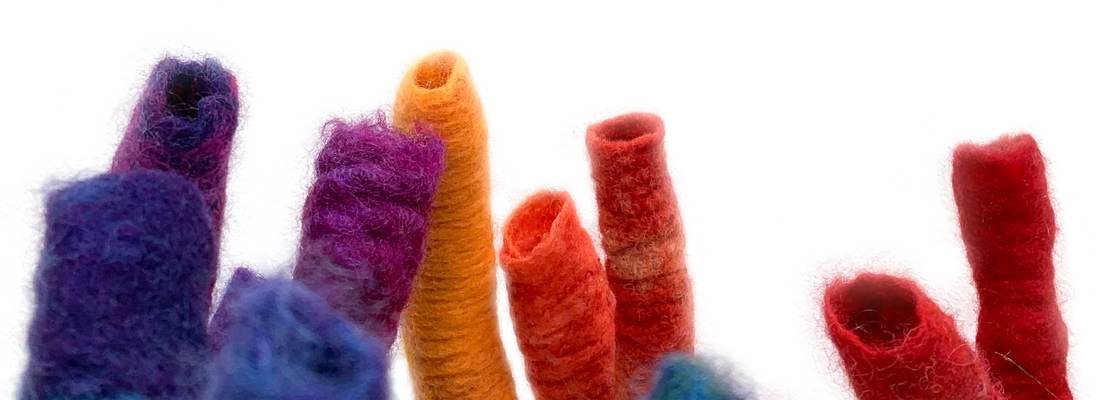
care for your craft: fibre
Share
Do you know how to care for your fibre craft? The first step is to learn more about the medium, its characteristics and functions.
The word "textile" comes from the Latin word texere, meaning "to weave". Textile, fabric and cloth are words that are generally interchangeable. They refer to anything made from fibres or fibrous materials.
Textiles are made by using either natural or synthetic fibres. Until the late 1800s, all textiles were made from natural fibres, including linen, cotton, silk, and wool. Today, many who work with natural fibres continue to collect, harvest, and clean their own raw materials as an integral part of the making process.
Industrialization and new technologies offer an ever increasing range of synthetic and natural fibres to the maker. Today, we also have synthetic fibres such as nylon, polyester and acrylic.
When shopping for fibre, some questions that will help you inform your purchase are:
Are all thread beginnings and endings properly secured?What is the likelihood of threads coming loose over time?
Are fabrics pre-treated for shrinkage and any texture changes, to ensure quality consistency with the final product?
Labelling on clothing and textile items are subject to Federal Government labelling legislation. Some items require permanent labels (able to withstand 10 washes) and others require non-permanent labels. Both require dealer contact information and fibre content percentages.
Labelling should also identify any washing or care instructions, fibre content and any colour pigments applied to the work.
Ask about the fibre process, such as colour-fasting. Fibre materials must be lightfast/colour-fast, before use. Ensure the piece’s design and quality are durable enough to last and withstand its intended use.
What are some other considerations that should be made when purchasing fibre?
How much use will you be giving the garment?
Fabrics should have consistent and appropriate tension throughout the work.
All vessels and wall weavings made of felt or other fibres should be solid and sturdy, able to hold its shape over time.
Pay attention to labelling, especially when shopping for items that will come in contact with skin or children. Be aware of allergies and inhalation hazards.
Caring for your glass
Caring for fibre art will be material depednant but there are a few care tips you can use to make your fibre last.
Avoid hanging or dislaying your fibre art in direct sunlight, sunlight can weaken fibres and bleach the colour out of the piece.
Placing your fibre items in a secure and level surface and keeping them away from heavy traffic places can also help prevent accidents. Framing fibre works behind glass also prevents dust from discolouring the piece!
Whether you are shopping for functional or sculptural fibre arts, and whether shoping for felt, hooked rugs or leather, make sure to learn more about your next fibre purchase!
Featured Image: Debbie Katz, "Playground"
